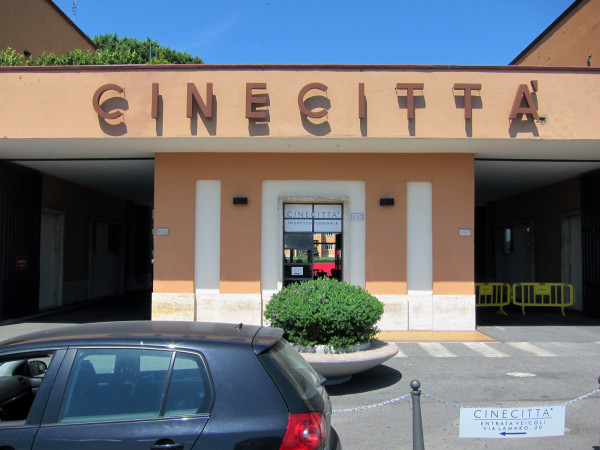 It’s known as ‘Hollywood on the Tiber’, ‘The Dream Factory’ and the ‘House that Fellini built’. It’s one of the most famous movie studios in the world. It’s also less than 30 minutes from the center of Rome.
It’s known as ‘Hollywood on the Tiber’, ‘The Dream Factory’ and the ‘House that Fellini built’. It’s one of the most famous movie studios in the world. It’s also less than 30 minutes from the center of Rome.
Just hop on the Metro A line and get off at the Cinecittà stop.
The train let’s you off directly across the street from the studio front gate. From there, just walk in. The studio is open to the public.
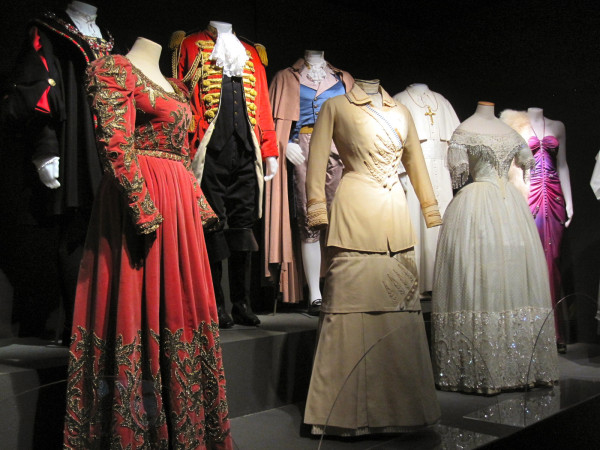 In 2011, two of the buildings on the studio lot were transformed into the Cinecittà Studio Museum.
In 2011, two of the buildings on the studio lot were transformed into the Cinecittà Studio Museum.
The idea was to promote the Film Studio with a temporary exhibition of memorabilia, props and costumes from many of the famous films created at Cinecittà.
The exhibit was so successful, it became a permanent Film Museum filled with set designs, movie props, special effects and glorious costumes worn by some of most famous international stars of the past 60 years.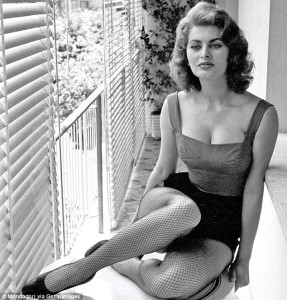
The museum tour ends in a studio screening room where you are treated to the screen tests of Sofia Loren, Claudia Cardinale, Stefania Sandrelli.
You will also see a lot of screen tests of new actors. some of them will make it. some of them, maybe not.
From the Cinema Museum you’ll be guided on a tour of a few of the movie sets on the lot.
You’ll see the set of 19th century New York City built for Martin Scorsese’s ‘Gangs of New York’.
You’ll visit 15th century Florence built in 2002 for the Italian TV movie ‘Francesco’ based on the life of Saint Francis.
And then, you’ll walk through the 1st century BC sets and streets built for the BBC/HBO series ‘Rome’.
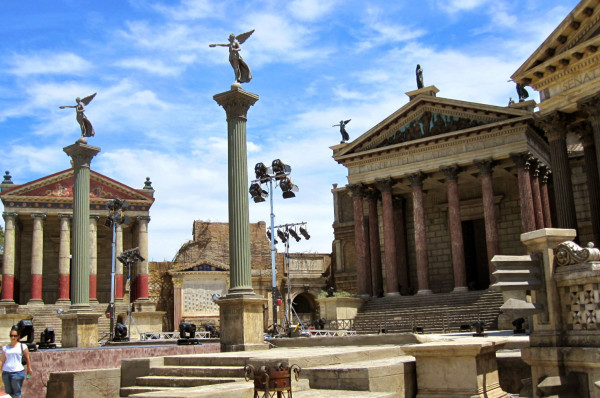 ‘Rome’ was the most expensive stage set ever created. It took 9 months to complete. Unfortunately, the cost of the production was so expensive the show ran out of money after two years.
‘Rome’ was the most expensive stage set ever created. It took 9 months to complete. Unfortunately, the cost of the production was so expensive the show ran out of money after two years.
There were rumors of a feature length film but they were put aside after one half of the ‘Rome’ scenery burned down in 2007.
Cinecittà began in 1936 when the small film studio in the center of Rome proved inadequate to make the epic political/propaganda films needed to inspire the ego of Benito (Il Duce) Mussolini. When the smaller studio (mysteriously) burned down, Mussolini seized the opportunity to build his propaganda empire 9km outside of the city.
Cinecittà was completed in 13 months (457 days to be exact).
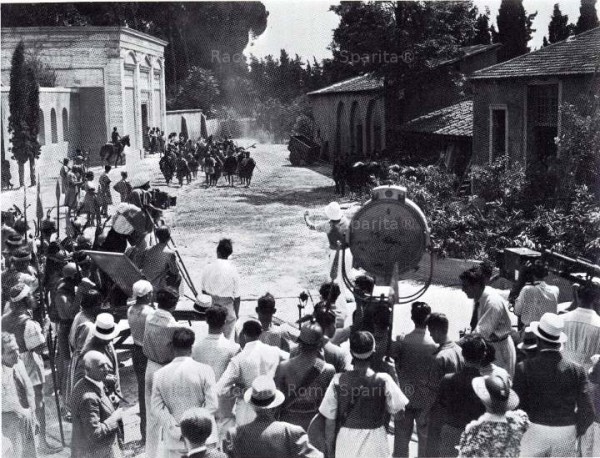 In 1937, Mussolini’s Cinecittà created the Grand Epic ‘Scipione l’africano’, the film adaptation of Scipio Africano’s victory over Hannibal at the 202 BC Battle of Zama. The film included over 7,000 extras, 1,000 horses and 50 elephants. It was Mussolini’s inspiration to the Italian people for a victory in Ethiopia.
In 1937, Mussolini’s Cinecittà created the Grand Epic ‘Scipione l’africano’, the film adaptation of Scipio Africano’s victory over Hannibal at the 202 BC Battle of Zama. The film included over 7,000 extras, 1,000 horses and 50 elephants. It was Mussolini’s inspiration to the Italian people for a victory in Ethiopia.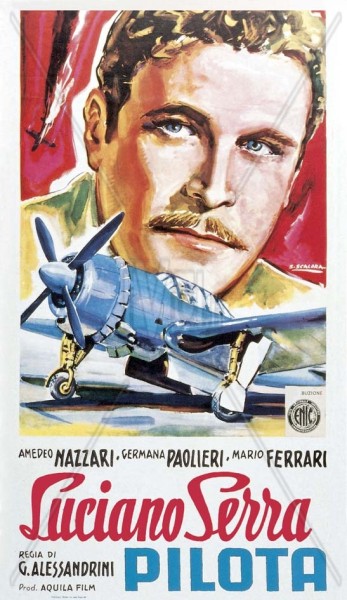
Although the film did receive good reviews, ultimately it was about as successful as the Ethiopian War.
The 1938 film ‘Luciano Serra, Pilota’ was received a little better. This was a story of a WWI pilot who retires to America after the war but returns to Italy to fight for the glory of Italy in the Ethiopian War.
By 1943, the Studio had already produced 279 films. Although Mussolini made an effort to censor American films, in truth, he loved Hollywood, especially the Hal Roach comedies. Il Duce was a big fan of Laurel and Hardy films and in 1937, he actually convinced Hal Roach to take his son, Vittorio, and teach him the art of making good comedies.
In 1937, Roach considered Mussolini the greatest statesman in the world. In 1939, when Italy and Germany signed the Pact of Steel, Hal Roach was pie in the face embarrassed, but by then, Vittorio was back in Rome and now in charge of film production at Cinecittà.
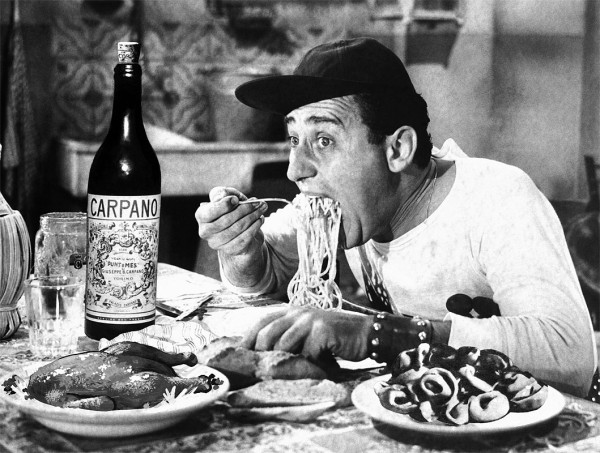 Most of the films created between 1938 and 1943 were comedic escape films. The great Italian comedic actor Alberto Sordi, who got his start in 1937 as the Italian voice of Oliver Hardy, was one of the Cinecittà stars.
Most of the films created between 1938 and 1943 were comedic escape films. The great Italian comedic actor Alberto Sordi, who got his start in 1937 as the Italian voice of Oliver Hardy, was one of the Cinecittà stars.
Sordi first role was in ‘Scipione l’africano. From there his career spanned 7 decades, working until 1998.
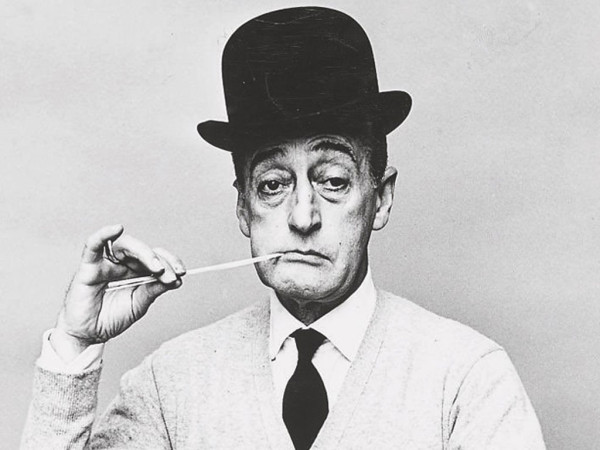 The other great Italian comedic actor of the day was Totò (Prince Antonio Focas Flavio Angelo Ducas Comneno De Curtis di Bisanzio Gagliardi). Totò was considered the Italian Charlie Chaplin.
The other great Italian comedic actor of the day was Totò (Prince Antonio Focas Flavio Angelo Ducas Comneno De Curtis di Bisanzio Gagliardi). Totò was considered the Italian Charlie Chaplin.
He was an amazing talent who made close to 100 films during a career that spanned close to 50 years.
In 1943, the Germans seized and looted theCinecittà studios.
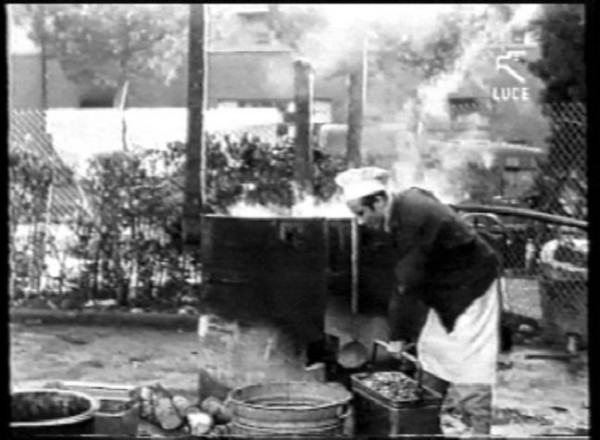 In 1945, Cinecittà was bombed by Allied war planes and by 1947, the studio hangars were filled with displaced Roman citizens who lost their homes during the 1945 bombings.
In 1945, Cinecittà was bombed by Allied war planes and by 1947, the studio hangars were filled with displaced Roman citizens who lost their homes during the 1945 bombings.
The studio lot became a homeless shelter for thousands of displaced people.
The 1943 Luchino Visconti film ‘Obsession’ might be credited as the first film of Italian Neorealism but it was Roberto Rosselini’s 1945 film ‘Rome, Open City’ that ignited the spark of the post war realistic films.
 Rosselini used the bombed out streets of Rome as his background for the story of Italian resistance against the German occupation. It won the Palm d’Or (Grand Prize) at the Cannes Film Festival in 1946.
Rosselini used the bombed out streets of Rome as his background for the story of Italian resistance against the German occupation. It won the Palm d’Or (Grand Prize) at the Cannes Film Festival in 1946.
Ingrid Bergman was so moved by ‘Roma, Città Apertà she wrote a letter to Rosselini asking to be in one of his films. In 1950, Rosselini cast her as the lead in ‘Stromboli’, a Neorealism film about a Lithuanian woman who escapes a WWII internment camp, marries an Italian POW and resettles to his barren, unwelcoming home on the island of Stromboli. The working relationship between Ingrid Bergman and Roberto Rosselini evolved into a marriage that lasted 7 years.
‘Roma, Città Apertà’ was also the start of a long international career for the legendary Roman actress, Anna Magnani, often referred to as ‘La Lupa’, the she wolf of Italian cinema, because of her explosive acting. Her celebrated international career spanned close to 40 years.
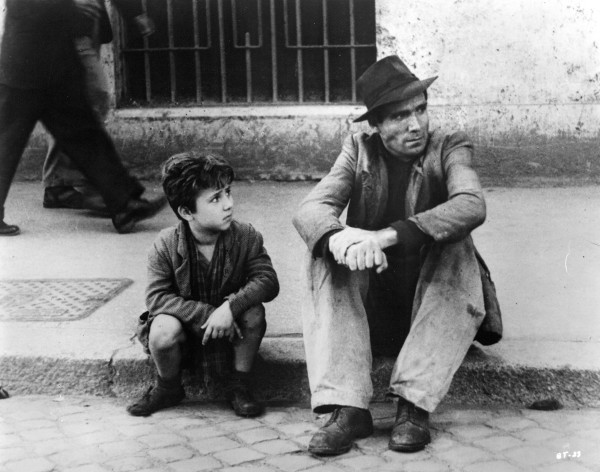 Neorealism brought such films as Vittorio di Sica’s ‘The Bicycle Thief’ (1948), a story of the struggles of life on the streets of Rome after the war.
Neorealism brought such films as Vittorio di Sica’s ‘The Bicycle Thief’ (1948), a story of the struggles of life on the streets of Rome after the war.
In 1949, a very young Vittorio Gassman and Raf Vallone starred in Giuseppe De Santis ‘Bitter Rice’, a film about sex and con men in the rice fields of northern Italy.
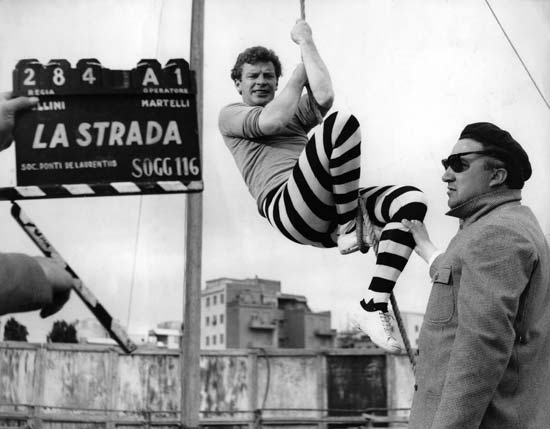 By 1954, the leading proponent of Neorealism was Federico Fellini. His 1954 film ‘La Strada’ and the 1957 film ‘Nights of Cabiria’, both starring his wife Giulietta Masina, launched his career as the most influential Italian film director of the 20th century.
By 1954, the leading proponent of Neorealism was Federico Fellini. His 1954 film ‘La Strada’ and the 1957 film ‘Nights of Cabiria’, both starring his wife Giulietta Masina, launched his career as the most influential Italian film director of the 20th century.
Since 1945, over 3,000 films have come through the Cinecittà studios, including 48 Oscar winners and 83 Academy Award nominees.
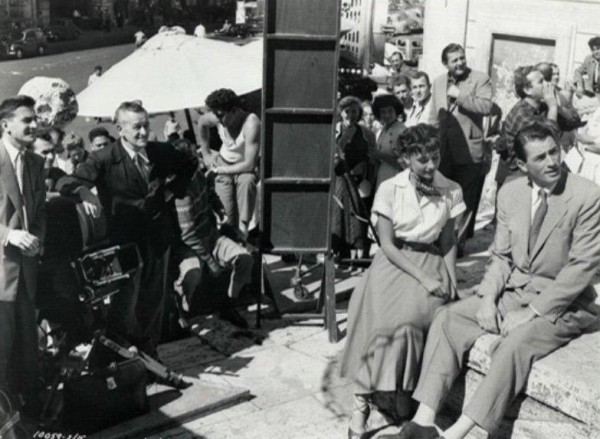 In the 1950’s and early 1960’s, the low cost of filming in Italy helped create the legend of Cinecittà with films like:
In the 1950’s and early 1960’s, the low cost of filming in Italy helped create the legend of Cinecittà with films like:
‘Quo Vadis’ (1951) with Robert Taylor and Deborah Kerr.
‘Roman Holiday’ (1953) with Gregory Peck and Audrey Hepburn.
‘Three Coins in the Fountain’ (1954) with Jean Peters and Clifton Webb,
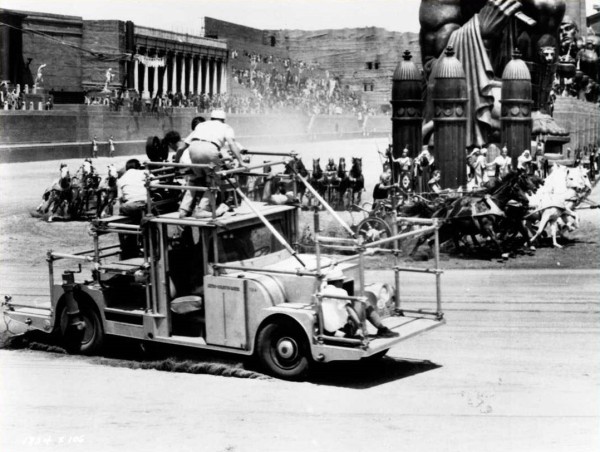 ‘Boy on a Dolphin’ (1957) with Sophia Loren,
‘Boy on a Dolphin’ (1957) with Sophia Loren,
‘Cleopatra’ (1963) with Liz Taylor and Richard Burton,
‘Ben Hur’ (1959) with Charlton Heston and Stephen Boyd.
‘The Agony and the Ecstasy’ (1965) with Charlton Heston and Rex Harrison.
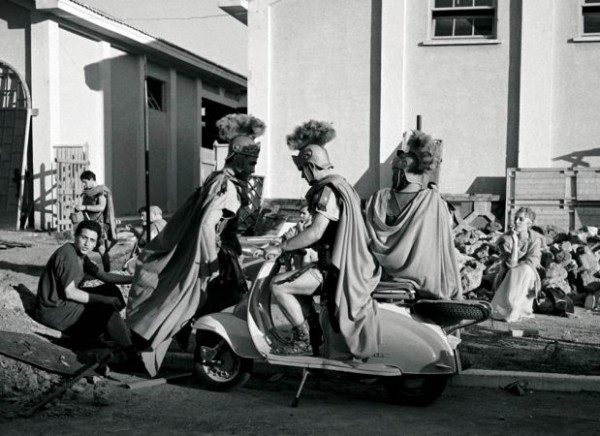 ‘Spartacus’ (1960) with Kirk Douglas, Tony Curtis and Lawrence Olivier.
‘Spartacus’ (1960) with Kirk Douglas, Tony Curtis and Lawrence Olivier.
By the late 1960’s, the phenomenon of the ‘Spaghetti Western’ took hold of the studio and films like Sergio Leone’s:
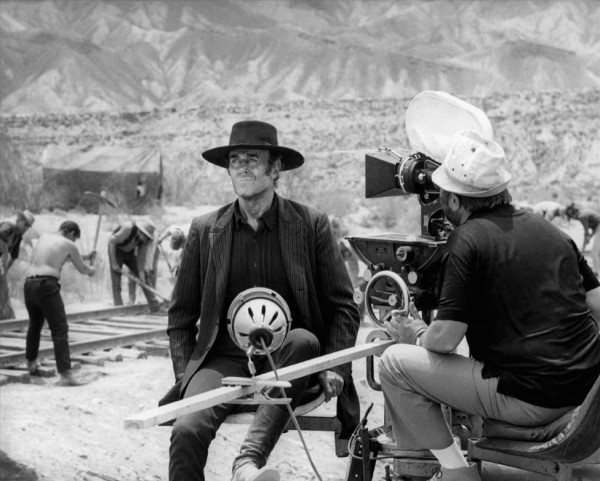 ‘Once Upon a Time in America’ (1968) with Henry Fonda and Claudia Cardinale
‘Once Upon a Time in America’ (1968) with Henry Fonda and Claudia Cardinale
‘The Dollars Trilogy; ‘Fistful of Dollars’ (1964), ‘For a Few Dollars More’ (1965) and ‘The Good, the bad and the Ugly’ (1966), international box office hits and the genre that launched the career of Clint Eastwood.
Studio 5 was Fellini’s sound stage. He worked there for close to 30 years, spending so much his time there he got the stage crew to build him an apartment inside the sound stage.
For his autobiographical film Amarcord, Fellini recreated the town of Rimini of his youth, complete with ocean, beach and village inside of Studio 5.
When Fellini died in 1993, his funeral was held in Studio 5. His funeral looked like one of his films.
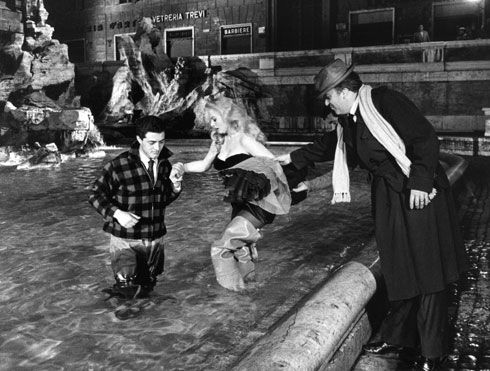 Fellini’s films at Cinecittà include;
Fellini’s films at Cinecittà include;
‘La Strada’ (1954) with Anthony Quinn, Giulietta Masina and Richard Basehart
‘Nights of Cabiria’ (1957) with Giulietta Masina
‘La Dolce Vita (1960) with Marcello Mastroianni, Anita Ekberg and Anouk Aimée
‘8 ½’ (1963), with Marcello Mastroianni, Claudia Cardinale and Anouk Aimée
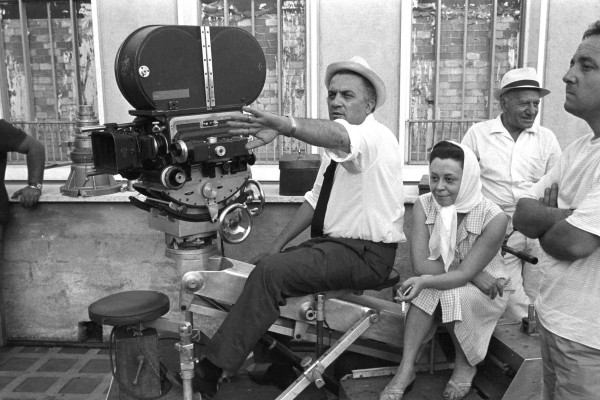 ‘Juliet of the Spirits’ (1965) with Giulietta Masina
‘Juliet of the Spirits’ (1965) with Giulietta Masina
Satyricon (1969) with Martin Potter, Hiram Keller and Capucine
‘Roma’ (1972) including Sophia Loren and Gore Vidal portraying themselves
‘Amacord’ (1973) with Pupella Maggio
‘Casanova’ (1976) with Donald Sutherland.
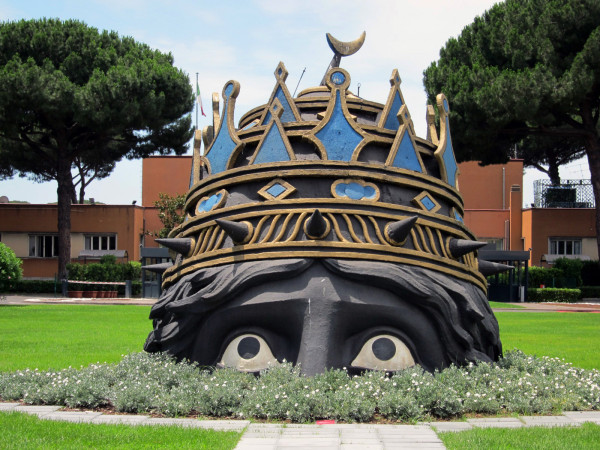 The crowned statue known as the ‘Venusia’, first appeared at the beginning of the Fellini’s Casanova. It now welcomes guests to the Cinecittà studios.
The crowned statue known as the ‘Venusia’, first appeared at the beginning of the Fellini’s Casanova. It now welcomes guests to the Cinecittà studios.
 In the 1970’s the glow of Cinecittà began to fade. ‘Spaghetti Westerns’ were still in production although Sergio Leone interest in the genre was fading. They were kept alive by Enzo Barboni (pseudonym E.B. Clucher) who created the comedic ‘Trinity’ westerns with Terrence Hill (Mario Girotti) and Bud Spencer (Carlo Pedersoli).
In the 1970’s the glow of Cinecittà began to fade. ‘Spaghetti Westerns’ were still in production although Sergio Leone interest in the genre was fading. They were kept alive by Enzo Barboni (pseudonym E.B. Clucher) who created the comedic ‘Trinity’ westerns with Terrence Hill (Mario Girotti) and Bud Spencer (Carlo Pedersoli).
In the 1980’s cost savings and a 25% tax reduction incentive once again brought Hollywood productions back to Cinecittà.
Some of the most famous films since 1980 include:
Sergio Leone’s “Once Upon a Time in America’ (1984) with Robert De Niro
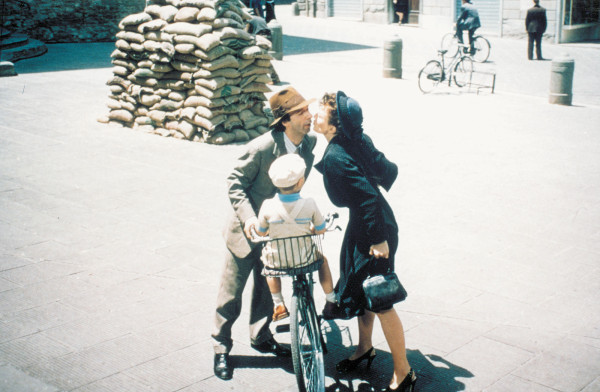 Jean-Jacques Annaud’s ‘The Name of the Rose’ (1986) with Sean Connery
Jean-Jacques Annaud’s ‘The Name of the Rose’ (1986) with Sean Connery
Bernardo Bertolucci’s ‘The Last Emperor’ (1987) with John Lone and Joan Chen
Francis Ford Coppola’s ‘Godfather Part III’ (1990) with Al Pacino
Anthony Minghella’s ‘The English Patient’ (1996) with Ralph Fiennes and Juliette Binoche
Roberto Benigni’s ‘Life is Beautiful’ (1997) with Roberto Benigni and Nicoletta Braschi
Anthony Minghella’s ‘The Talented Mr. Ripley’ (1999) with Jude law and Matt Damon and Gwyneth Paltrow
 Martin Scorsese’s ‘Gangs of New York’ (2002) with Leonardo di Caprio and Daniel Day-Lewis and Cameron Diaz
Martin Scorsese’s ‘Gangs of New York’ (2002) with Leonardo di Caprio and Daniel Day-Lewis and Cameron Diaz
Mel Gibson’s ‘Passion of Christ’ (2004) with Jim Caviezel and Monica Bellucci.
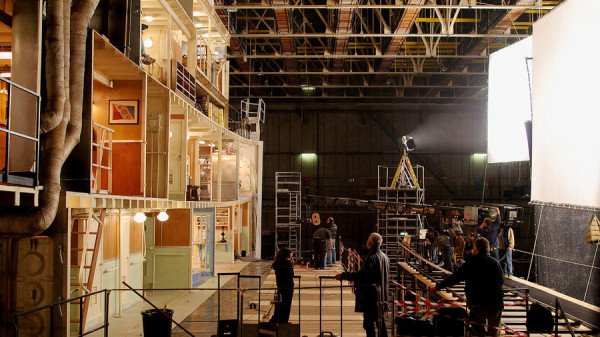 Wes Anderson’s ‘The Life Aquatic’ (2004) with Bill Murray and Angelica Huston
Wes Anderson’s ‘The Life Aquatic’ (2004) with Bill Murray and Angelica Huston
Ron Howard’s ‘Angles and Demons’ (2009) with Tom Hanks and Ewan McGregor
And Rob Marshall’s ‘Nine’ (2009) with Daniel Day-Lewis, Marion Cotillard and Penelope Cruz, based on Fellini’s film (and autobiography) ‘8 1/2’.
Many of the props, designs and costumes from these films and others are on display in the Cinema Museum.
It’s an amazing collection, guaranteed to bring back a lot of memories.
The Studio outlasted Mussolini, the Nazis, the Allied Bombing, the 1970’s, bankruptcy in 1997, the fires of 2007 and the conflicts between the studio workers, the government and the studio owners in 2012.
In February 2015, Cinecittà will begin filming a remake of ‘Ben Hur’, with Jack Huston is the role made famous by Charlton Heston in 1959.
Also on the film schedule is ‘Zoolander 2” with Ben Stiller, ‘Spectre’, the new James Bond film.
The studio tours are open from 9:30am – 7:00pm and closed on Tuesdays and Holidays. The cost is €10 per person. There are discounts with a Roma Pass.
English speaking tours are at 11:30am and 4:00pm. All other tours are in Italian.
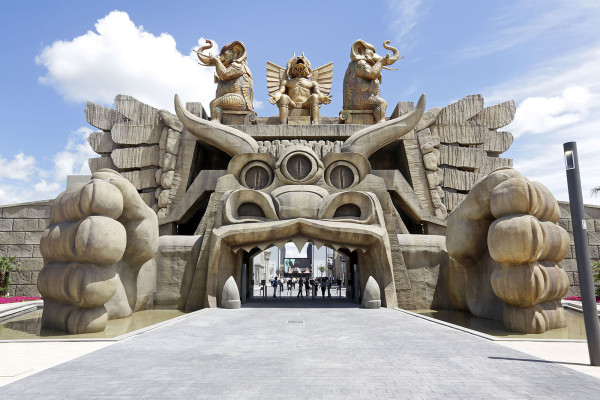 In 2014, Cinecittà World opened it’s gates about 16 miles southwest from Cinecittà Studios on lot previously owned by Dino De Laurentis for his movie studio ‘Dinocittà’.
In 2014, Cinecittà World opened it’s gates about 16 miles southwest from Cinecittà Studios on lot previously owned by Dino De Laurentis for his movie studio ‘Dinocittà’.
The theme Park has 20 attractions, 8 film sets, 4 restaurants and 4 theaters. It is designed similar to the Disney World or Universal Studios Theme Park with rides and scenery recreations based on the famous films that came from the film studio.
Most of the scenic elements are designed by Dante Ferretti, the production designer of ‘The Name of the Rose’, ‘The Adventures of Baron Munchausen’, ‘Interview with the Vampire’, ‘Kundun’, ‘Gangs of New York’, ‘The Aviator’ and ‘Sweeny Todd’, to name a few.
Oscar winning music composer, Ennio Morricone composed the soundtrack for the Sergio Leone inspired ‘western set’ at the Theme Park. Morricone is one of the greatest Italian film composers of all time. A few of his western classics include ‘Once upon a time in the West’ and ‘The Good, the Bad and the Ugly’ and ‘A Fistful of Dollars’.
If you’re a movie enthusiast Cinecittà should be on your Rome to do list.
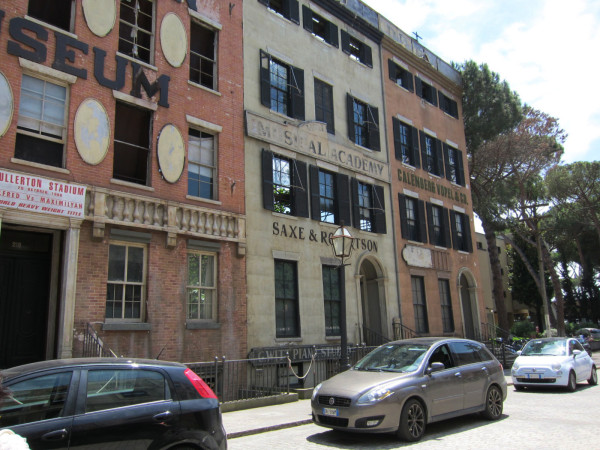
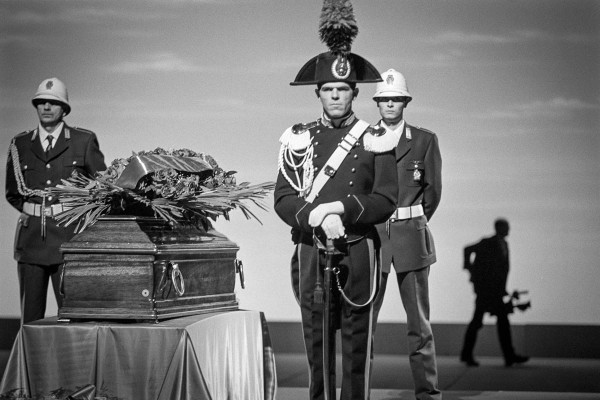
You must be logged in to post a comment.